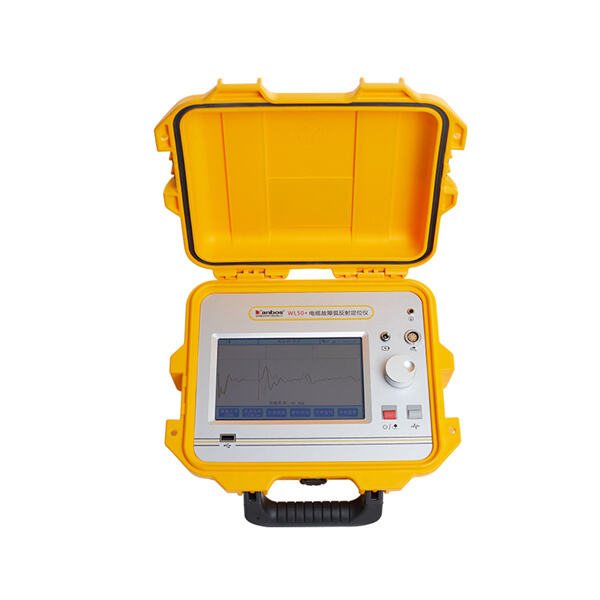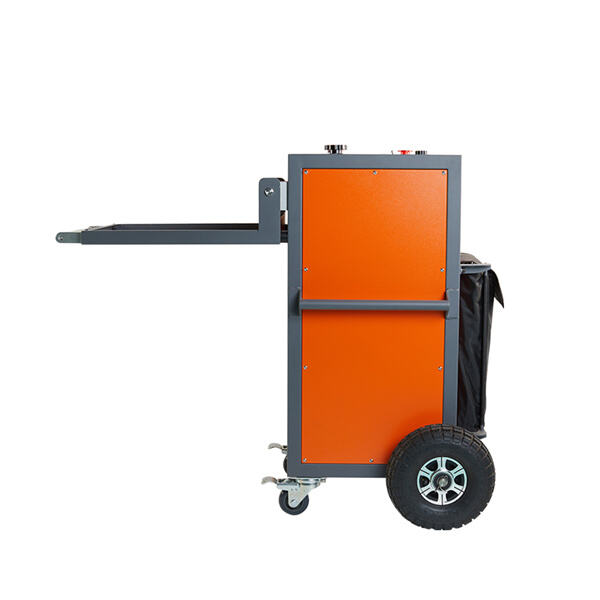 EN
EN
 EN
EN
Υπάρχουν αρκετοί τρόποι για να εντοπιστούν οι σφάλματα καλώδιων, και ο πιο κατάλληλος πρέπει να επιλεγεί βάσει του τύπου του καλωδίου και της αποτυχίας. Μια από τις πιο συνηθισμένες μεθόδους είναι η Αναμετρητική Μέθοδος Τομέα Χρόνου, ή TDR συντομότερα. Σε αυτή τη μέθοδο, μια μοναδική σήμαση μεταφέρεται μέσω του καλωδίου και μετά καθορίζεται ο χρόνος που χρειάζεται για να επιστρέψει. Έτσι, οι τεχνικοί μπορούν να καθορίσουν πόσο μακριά βρίσκεται το σφάλμα κατά μήκος του καλωδίου.
Η τεχνική που ονομάζεται Μέθοδος Ιμπάλσου Ρεύματος (ICM) είναι επίσης χρήσιμη για την ανίχνευση προβλημάτων καλωδίων. Σε αυτή την προσέγγιση, ένα ισχυρό ηλεκτρικό ρεύμα εισαγόταν στο καλωδίο. Αυτό δημιουργεί έναν μαγνητικό περιβάλλοντα που μπορεί να ανιχνευθεί από ένα ειδικό αισθητήρα. Προαγγελία 3: Ξανά, βάσει των τύπων προβλημάτων καλωδίων που προσπαθείτε να εντοπίσετε, αυτή η μέθοδος είναι ειδικά χρήσιμη για την ανίχνευση συγκεκριμένων τύπων προβλημάτων και την εύρεση της τροχιάς τους.
Ένας άλλος λέγεται Αναπήδηση Ροής Συντόμωσης, ή ΣΥΡ Προϊόντα . Σε αυτή την τεχνική, αυτό που κάνετε είναι να δημιουργήσετε ένα χτύπημα ηλεκτροτάσεως και να δείτε πώς αναπηδάει πίσω. Με την ανάλυση αυτής της αναπήδησης, οι τεχνικοί μπορούν να αναγνωρίσουν πού βρίσκεται το πρόβλημα στο καλώδιο. Αυτή η προσέγγιση είναι αποτελεσματική για τα απομονωμένα καλώδια με σφάλματα, αλλά απαιτεί ειδικό εξοπλισμό για την εφαρμογή της.
Ενας από τους κύριους παράγοντες για την αποτελεσματική τοποθέτηση σφαλμάτων καλωδίων είναι η εξοικονόμηση χρόνου και χρημάτων. Επιτρέπει να αποφύγετε μια μάταιη καταδίωξη όταν γνωρίζετε πού είναι το πρόβλημα. Αυτό θα εξοικονομήσει χρόνο καθώς και διάρκεια μη λειτουργίας του εξοπλισμού. Επιπλέον, Εντοπισμός Σφαλμάτων Καλωδίου η γνώση της τοποθεσίας του προβλήματος προστατεύει τον καλωδιακό από καταστροφή κατά τη διάρκεια μιας ανασκαφής, εάν αυτό είναι απαραίτητο, καθώς αυτό μεγιστοποιεί την απόδοση και αυξάνει την διάρκεια ζωής του ίδιου του καλωδιακού.

Υπάρχουν χιλιάδες λόγοι για προβλήματα στους καλωδιακούς. Η υγρασία και οι καλωδιακοί υποφέρουν μετά από μεγάλο διάστημα, ακόμη και με τη φύση και τα αντικείμενα που τους περιβάλλουν. Η θερμοκρασία μπορεί να αλλάξει — πράγμα που μπορεί να επηρεάσει τους καλωδιακούς· τα ζώα επίσης έρχονται σε επαφή με αυτούς, Δοκιμασία και διαγνώστικη καλωδίων εάν είναι ή όχι κάποιος διατροφοδιώνης που τρώει τα καλωδιά. Εάν οι τεχνικοί βρουν με ακρίβεια το σφάλμα, μπορούν όχι μόνο να το επισκευάσουν αλλά και να διagnostοστοσοπήσουν και να αναγνωρίσουν την ριζική αιτία. Έτσι, μπορούν να πάρουν προληπτικά μέτρα για να αποφύγουν την επανάληψη των προβλημάτων.

Καταλαβαίνω πόσο προβληματική μπορεί να είναι η διάκοπη λειτουργία για τους παρόχους καλωδιακών υπηρεσιών και τους πελάτες τους. Και ενώ οι πελάτες υποθέτουν ότι η καλωδιακή υπηρεσία τους θα λειτουργεί πάντα, όταν δεν το κάνει, η ανυπομονησία μπορεί να είναι μεγάλη. Η διάκοπη λειτουργία μεταφράζεται σε χαμένα εσόδα για τους παρόχους υπηρεσιών και κάθε λεπτό που χρησιμοποιείται για την ανίχνευση και την επισκευή του προβλήματος οδηγεί σε ακόμα μεγαλύτερη απώλεια χρημάτων.

Η Tanbos απασχολεί προσωπικό που είναι καλά εκπαιδευμένο και εμπειρογνώμονα σε όλους τους τύπους προβλημάτων καλωδιακών υπηρεσιών. Χρησιμοποιώντας τα πιο σύγχρονα εργαλεία και τεχνικές για την πρώιμη ανίχνευση των σφαλμάτων, Αναγνώριση καλωδίων μπορούν να ελαχιστοποιήσουν τη διάκοπη λειτουργία και να διατηρήσουν τους πελάτες μας ευχαριστημένους. Οι ειδικοί μας είναι οι καλύτεροι στην παροχή ποιοτικής υπηρεσίας στο σπίτι σας, εξασφαλίζοντας ότι δεν θα παραμένετε χωρίς καλωδιακή υπηρεσία για μεγάλο χρονικό διάστημα.